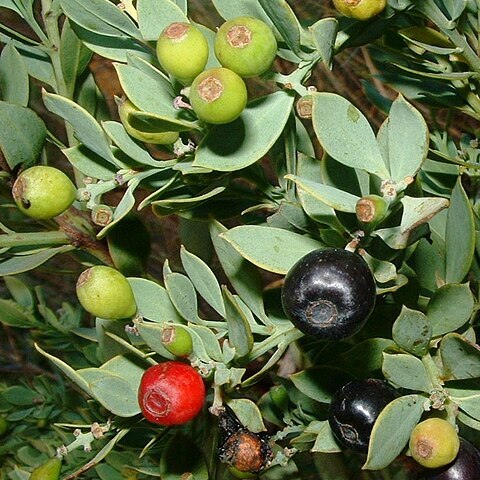Leaves opposite, occasionally subopposite, 20–45 × 8–20 mm, elliptic or elliptic-oblong, occasionally ovate or obovate, apex abruptly apiculate, base cuneate, veins raised above, immersed beneath, midvein running back down stem in narrow ridge; petiole 3–4 mm long, articulated to a small cushion.
Perianth pale greenish-yellow, leathery; tube very short (c. 0.2–0.3 mm), obscured inside by the disk; lobes normally 4, 1.6–1.7 × 1.2–1.6 mm, spreading, ovate-deltoid, tips slightly hooded.
Ovary ± cylindric, ovules 4; style very short (c. 0.1–0.2 mm), cylindric, thick; stigma 4-lobed, lobes globose.
Fruit 6–7 mm in diameter when dry, ellipsoid, epicarp thin, fleshy, red at maturity.
Flowers hermaphrodite, arranged in small terminal panicles of determinate length.
Peduncles 4–10 mm long, terminating in an umbellate cluster of several flowers.
Stamens normally 4; filaments c. 0.25 mm long; anthers c. 0.25 mm long.
Shrub or small tree 0.8–5 m tall, all parts glabrous.
Bracts and bracteoles 1–3 mm long, linear-lanceolate.

